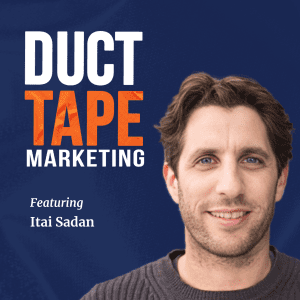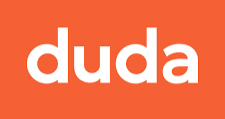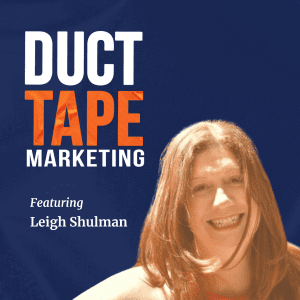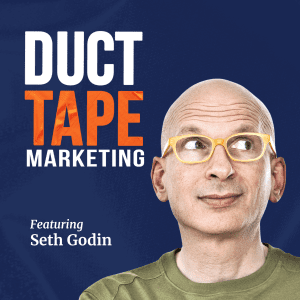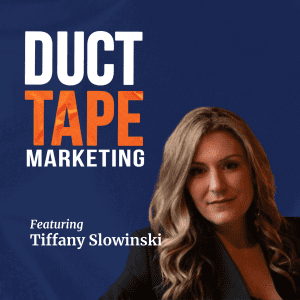Why You Should Read Business Books That Are Not About Business written by John Jantsch read more at Duct Tape Marketing
The Duct Tape Marketing Podcast with John Jantsch
In this episode of the Duck Tape Marketing Podcast, I had the pleasure of being INTERVIEWED by Sara Nay. Sara Nay is the COO of Duct Tape Marketing. She oversees day-to-day operations to support the growth of Duct Tape Marketing and the Duct Tape Marketing Consultant Network.
She focuses on strategic planning, goal setting, and directing the company’s operations in support of its goals. And on a personal note, she’s also my daughter—which makes me “Pop Pop” to her kids!
In this episode, we change it up a bit as I become the interviewee. We explore my journey into entrepreneurship, why I started my own business, why I didn’t work for someone else (the answer will surprise you), my passion for small businesses, and the evolution of marketing over the years.
I reveal lessons from my polar opposite parents and my former fears about running a business.
We also dive into my favorite topic: the impact of AI on small businesses, the opportunities and challenges they face, and the importance of curiosity and innovation in business.
I wrapped up with a glimpse into my future aspirations—what might life look like after Duct Tape? And I answered the timeless question: What’s my all-time favorite business book?
Key Takeaways:
- I started my entrepreneurial journey due to a lack of confidence in traditional employment.
- Working with small businesses is both terrifying and gratifying.
- Curiosity drives me to explore new marketing trends and technologies.
- AI is not just a tool but a foundational element in marketing.
- Small businesses can leverage AI for efficiency and personalization.
- The buying intent of consumers remains strong despite market changes.
- Experience helps entrepreneurs navigate ups and downs in business.
- Marketing and innovation are the two pillars of a successful business.
- Reading outside of business literature can inspire innovative ideas.
- I envision a future where I write a work of fiction.
Chapters:
- [00:00] Introduction to a Unique Podcast Experience
- [02:01] The Journey into Entrepreneurship
- [04:03] Passion for Small Businesses
- [05:49] Curiosity and the Evolution of Marketing
- [08:03] AI’s Impact on Small Businesses
- [11:08] Opportunities and Challenges for Small Businesses
- [13:52] Riding the Waves of Business
- [16:21] Business Advice and Insights
- [19:46] Future Aspirations and Legacy
Let us know if you’d like to see us make more shows like this!
This episode of the Duct Tape Marketing Podcast is brought to you by:
Oracle
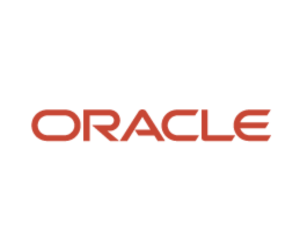 Nobody does data better than Oracle. Train your AI models at twice the speed and less than half of the cost of other clouds. If you want to do more and spend less, take a free test drive at Oracle.
Nobody does data better than Oracle. Train your AI models at twice the speed and less than half of the cost of other clouds. If you want to do more and spend less, take a free test drive at Oracle.
Testimonial (00:00): I was like, I found it. I found it. This is what I’ve been looking for. I can honestly say it has genuinely changed the way I run my business. It’s changed the results that I’m seeing. It’s changed my engagement with clients. It’s changed my engagement with the team. I couldn’t be happier. Honestly. It’s the best investment I ever made.
John Jantsch (00:16): What you just heard was a testimonial from a recent graduate of the Duct Tape Marketing certification intensive program for fractional CMOs marketing agencies and consultants just like them. You could choose our system to move from vendor to trusted advisor, attract only ideal clients, and confidently present your strategies to build monthly recurring revenue. Visit DTM world slash scale to book your free advisory call and learn more. It’s time to transform your approach. Book your call today, DTM world slash scale.
(01:00): Hello and welcome to another episode of the Duct Tape Marketing Podcast. This is John Jantsc, and doing something really crazy today. A couple things actually that we’re going to do a little different today. I’m going to be the guest and I’m actually going to be interviewed on my own show by none other than Sara Nay. Some of you have met her. She’s the head of operations at Duct Tape Marketing, but she’s also one of my daughters who has worked with me for 13 years.
(01:28): So we thought, let’s see what kind of questions she could come up with and hopefully you’ll find this entertaining. Now, another thing that we are experimenting with today, so hopefully cross our fingers. This works out there in LinkedIn land. We are actually streaming this live. This is the first podcast that I’ve streamed live, so we’ll see how that works out as well. Love to get any feedback in the comments if you would like to and ask questions in LinkedIn if you are so inclined. And we’ll just see how this goes. But for now, I’m going to turn this over to Sara. Are you going to introduce me or how’s this going to work?
Sara Nay (02:05): I think people know who you are at this point, but I was actually curious as you were talking through that. How many interviews do you think you’ve conducted over the years on this podcast where people have listened to you be the host?
John Jantsch (02:16): Yeah. Oh, be the host. So I started this show in 2005 and certainly have done a minimum of a hundred shows a year, some years actually more than that. So I dunno what that adds up to. But yeah, I think we’re over 2000.
Sara Nay (02:30): So you’ve possibly listened to John interview guests 2000 times or so at this point. So this will hopefully be a fun perspective to hear him being interviewed. So my first question to you, I want to go way back to when you started Duct Tape Marketing as an entrepreneur. And I want to know more about the reason of why you went into entrepreneurship versus getting a full-time job.
John Jantsch (02:52): And I tell this story in my last book, I haven’t been telling it for years, but now that I’m getting old, all the secrets come out. But I often felt like when I got out of school, I didn’t feel prepared to do necessarily anything, any skill. I didn’t have honors in degrees in college that would’ve made me stand out to employers. And so I really think of, a lot of it had to do with a lack of confidence almost that I could get a job I saw that my friends were getting. And so I really thought as silly as this sounds, because a lot of people actually think, no, I’ve got enough years of experience to go out there on my own now. And I actually thought, no, I better go out there on my own. I know I can hustle work and maybe that’ll turn into something.
Sara Nay (03:38): That’s great. And you chose the small business space. I know you didn’t originally start there, but what caused you to make that shift into the small business space?
John Jantsch (03:46): Yeah, like I said, I hustled work, which meant anybody that would talk to me, I’d say I could do that. How hard could it be? Yeah, sure, I could do that. So I got big projects, little projects, whatever came my way. But I did land some small business clients that needed marketing help and I knew I could figure out how to help them, and I just really enjoyed working with them. I often say there’s something equal parts terrifying and gratifying about working with that person where they’re actually writing the check. I mean, they’re making a decision to pay you or maybe some other expense. It’s not the big company that accounts payables just paying the bills and moving on the next day. So I really love that. And plus you got to see the results of your work. I mean, you actually could see that, hey, this is making a difference. And so I think that’s why I really chose to serve that market. And quite frankly, it was a very fragmented market, mean nobody was really serving them in the marketing space. So I saw a lot of opportunity there as well.
Sara Nay (04:45): And that leads to one of the next questions I was going to ask is what keeps you going after all of this time? So obviously I’ve seen a lot of passion over the years towards the small business audience. Would you say that’s been one of the things that’s contributed to you being able to continue this on for 30 or so years at this point?
John Jantsch (05:01): I think there’s a couple things. There’s no question I feel like I’m serving me. I mean, I am a small business, so I feel like I’m one of the brethren, and so that I think is really gratifying. I think another thing too is I really always often talk about curiosity being my superpower. I just love the new stuff. And so to keep doing this, I mean, you think about all the things that have happened in the last 30 years in marketing in technology, and I think if you didn’t love it and weren’t really curious about what’s new and how does this work and how can I apply this, you’d kind of get run over. And so I really think that’s added to my love of staying in this and really helping other people figure it out. And I think people look to our brand for that guidance. We’re not excited about the next new thing because it’s the next new thing, but we’re excited about it because it can help us do what we’re fundamentally here to do as marketers.
Sara Nay (06:01): And that curiosity piece, obviously there’s been a lot of evolution in the last couple years on the topic of ai, and we’ve as a company, been diving into AI quite a bit in terms of increasing our productivity and what we’re doing for our clients. And so just curious, well, I didn’t mean to use the word curious there, but how has this curiosity of yours allowed you to dive into the whole topic of AI on a deeper level?
John Jantsch (06:22): Well, it’s just another thing. I mean, if you think about it, I mean, since I’ve been doing this, I mean when I started this, we didn’t have the internet. We didn’t have websites. So it’s like, oh, the website’s another thing we got to figure out. And then, I don’t know, email, social media. I mean, just over the years some new thing is going to come. I think that AI in a lot of ways is going to be different in that it’s not a platform. It’s not even a tool really. I think it’s going to be a plumbing, it’s going to really be baked into pretty much everything we do. In fact, it’s been baked into many things that we do without our knowledge. It’s just when a tool called chat GPT came along and it was very easy for somebody who didn’t know anything about it, could actually now experience the results of AI that might actually benefit them.
(07:12): So I think that’s why at the last year and a half, you’ve seen so much buzz about it. But I just think that it’s a perfect example of curiosity. I mean, you can make AI do just about anything it seems like. And so now it really is up to your imagination. So to me, it’s like the perfect tool to really explore and find ways that maybe nobody’s even talking about it. Or a lot of times what happens is a new technology will come along and people will discount it because they’ll see the ways people are talking about it. There’s no shortage of get rich quick people that are back out there on the AI train trying to say, oh, take this course and you can make $5,000 a minute in your sleep. And so I think that turns a lot of people off. But what really excites me is when you can go, but I can do this little thing that’s going to make me more efficient, more profitable, is going to take away work that I don’t like doing anyway. I mean when you start looking at all the possibilities, it really is your only limitation, I think is your imagination and your curiosity.
Sara Nay (08:20): And talking back to the small business space as well, which is a lot of who we serve, how do you think AI is impacting that group specifically?
John Jantsch (08:29): Well, I think that, let’s talk about marketing. I mean, that’s one aspect, obviously where it’s pretty much impacting anybody because there are things that AI tools can do much more efficiently, and I would say in some cases more effectively than even humans. It’s very good at doing research, it’s very good at analyzing, let’s say your Google Analytics data. A lot of people look at that and go, oh, good, we had more hits or whatever. And to be able to say, no, tell me what we need to do differently. Tell me what we could do better. Tell me what our best opportunities are. And to have something that is basically a super computer with just very common language requests and prompts can now crush that data and really give you some insights back that are going to help you prioritize or help you certainly work better.
(09:17): We’re going to see personalization going to all new levels to where customer segments will be inside a database and they’ll be able to have AI look at who that person is and what their needs are and where they are in the buyer journey and what segment they’re in. And all of a sudden say, similar to say how Amazon says, oh, you read these three books, you’ll probably like these three books. Well, that’s going to start happening at a greater level for pretty much everybody. And I think that’s one of the things that these advances in technology do is they really democratize some of the things that the Amazons of the world have made an expectation. But at what cost, right? I don’t have tens of thousands of programmers that can make all this stuff work for me. Well, all of a sudden now, even the smallest business has that kind of computing power really in their hands.
(10:11): So I think that every element hiring, it’s certainly impacting for folks. I mean, AI can take 2000 resumes and really analyze them for exactly what you’re looking for. There’s always going to be a human element, but there was a great deal of that kind of repetitive work that doesn’t necessarily require a human element and frankly is work that is kind of mind numbing. There’s not a whole lot of humans that want to do it. And so I think you take things like that and all of sudden, now I know you and I have talked about this, all of a sudden now you’ve got people who were doers who are now really more managers of the doing. And I think that’s actually very empowering. A lot of people talk about, oh, it’s going to replace people. I think it’s actually has the opportunity to not only make people more successful and more efficient in their work, but I think empower them to actually do better and bigger things.
(11:08): AI might be the most important new computer technology ever. It’s storming every industry and literally billions of dollars are being invested. So buckle up. The problem is that AI needs a lot of speed and processing power. So how do you compete without cost spiraling out of control? It’s time to upgrade to the next generation of the cloud. Oracle Cloud infrastructure or O-C-I-O-C-I is a single platform for your infrastructure, database, application development, and AI needs. OCI has four to eight times the bandwidth of other clouds offers one consistent price instead of a variable regional pricing. And of course, nobody does data better than Oracle. So now you can train your AI models at twice the speed and less than half the cost of other clouds. If you want to do more and spend less like Uber eight by eight and Databricks Mosaic, take a free test drive@ociatoracle.com slash duct tape. That’s oracle.com/duct tape oracle.com/duct tape.
Sara Nay (12:11): Yeah, absolutely. And on this note too, what do you think are the opportunities for small business right now? And it doesn’t necessarily just have to be limited to ai. It can be anything. And also I’d love to hear what do you think are some common challenges that you see in the small business space as well?
John Jantsch (12:26): Well, I think the opportunity and the challenge are probably the same thing. I’ve been talking about how I think the last 10 years, some marketers have gotten pretty lazy because it was actually easy if you just followed Google’s rules, which they laid out, you could get search traffic. I’m not saying it was like magic fairy dust, but I mean, you did the things that they said you should do. You could get search traffic and you could get leads. The social networks were more than willing to sell all the data on their users. And so you could really target very specifically who might want your products and services. And so consequently, some businesses were able to grow pretty easily. Now of course, what’s happening is you look at the search results, you do any kind of search on Google, and they want you to accept the generative AI answer that they’re going to give you rather than clicking off to the website.
(13:16): That might also, frankly, they might’ve actually extracted that answer from. And so search is going to get much harder across the board. Industries are seeing 25 and 30% of their organic traffic just disappear overnight because people are getting the answers that they want without reading the blog posts that might also have a CTA on your website. And of course, third party data is going away. You can’t sell that data. And so consequently, all the ad platforms are actually increasing their pricing extremely. So that’s going to be the real challenge. But I think the real opportunity is the buying is not going away. The buying intent is not going away. People still need those products and services. And so businesses that I think can figure out how to actually make a real connection with prospects and with customers and really focus on brand strategy as well as campaign or marketing strategy, I think are going to be, I think the ones that really stand out today. So there’s a real opportunity, but it really does change the mindset to being less about demand creation and really more about organizing behavior and focusing very much on strategy.
Sara Nay (14:29): Yeah, absolutely. And building trust and guiding the customer journey and getting referrals, which I’m sure people, if they’ve heard you speak, I’ve heard you on those topics before. I want to take it back to you a little bit at this point. So as we said, you’ve been in business for quite some time. I’ve learned this from you and seen it. There’s a lot of ups and downs in business. And so I’ve struggled with that over the years is to say things are going to be okay, we’re going to get back on track. And so just from your perspective, what has helped you ride all of those waves over the years?
John Jantsch (14:57): Well, I think there’s no question that experience helps you. I mean, when you go through a couple of those ups and downs, you’re like, oh, okay, actually there was an opportunity in that we were, woe is me. But then you’re like, oh, wait a minute. There’s actually an opportunity or we can learn something from that. So you do that enough times, and I’m not saying it doesn’t take some resilience and some grit, and I certainly had times when I was very worrisome about putting you guys through college, all the things that every business owner goes through. But there’s no question that seeing it a few times and realizing, hey, not only is everything going to be okay, but we just actually, we have to start thinking about it differently. We have to start looking for where the opportunity is because it’s always there. And I think that helps kind of say, okay, yeah, this was a down month, but hey, every December is a down month or something along those lines.
(15:52): The experience really comes from that. There’s also an element of mindset that’s a piece of it as well. And I really often, my parents were very different people. My dad was very worried all the time. We had 10 kids, I don’t blame him, but he was worried quite often about something was going to go wrong, and my mom was the complete opposite. She was like, oh, nope, something different. This didn’t happen because it wasn’t supposed to. And I think that sort of optimistic mindset is certainly can be a real tool for entrepreneurs because you do have to really look for, we get very focused on what we want to happen or what we think should happen. And when it doesn’t, you can really get knocked off track. But if your mindset is okay, that wasn’t supposed to happen that way, where’s the opportunity or what is supposed to happen? I think that mindset, while it can be hard sometimes, really can take you a long way.
Sara Nay (16:46): Yeah, I like a lot of what you said there, but I agree with the learning aspect specifically. That’s something that I’ve really tried to shift my focus on is if we don’t reach a specific goal, it’s okay, what can we learn from this versus stressing out about it to do better next time around? So that’s great. I have a couple quick fire questions. Maybe these will be quick, maybe not, depends on what you have to say on ’em. But to wrap us up today, the first one I want to hear is what is the best business advice you have ever received?
John Jantsch (17:13): Dang, I’ve been asked that question so many times on the podcast that I’ve been on, and I don’t know that I have a great answer, but I always go back to early on in my journey, I read a book that was actually written in the fifties. Most people of my age are familiar with Peter Drucker, and the book was called The Practice of Management. And that book, I just remember, I’m not even sure really why I read it to be truthful. I wasn’t trying to understand management of a big corporation, which is what he wrote about, but he had a line in there that to this day, and you’ll see it quoted all the time because a lot of reference it, especially marketing people, but the quote in there was, the only two things in a business that matter are marketing and innovation. Everything else is a cost. And again, you’ll see that people quoting that all the time. But I remember reading that in the nineties perhaps when I was still consuming or when I started consuming a lot of business books. And I just remember thinking, okay, that idea of marketing and innovation, that marketing needs to be a system, that marketing needs to be a high priority, that marketing is everything really infused a lot of my thinking through the years,
Sara Nay (18:25): And this relates to that. It might be the same answer, but what’s the best business book you’ve ever read? Is it that one or is it a different one?
John Jantsch (18:33): So it’s actually sitting right here.
Sara Nay (18:36): There you go. He’s coming there.
John Jantsch (18:38): This is not a business book. And I tell people this all the time, that one of, and this may be just my curiosity bug, but one of the ways that I’ve gotten great business books or business ideas over the years is to read books that are not related to business. And this one is by Christopher Alexander. It’s kind of a classic, I don’t know if my camera’s going to pick it up, but it’s called The Timeless Way of Building. He’s an architect and he was talking about building communities, and there’s so many things that can be gleaned from things like math and science and architecture that apply to the industry that you’re in, but it’s just a different way of looking at it. A lot of times you read out business books, you read marketing books. You and I have laughed about this before. All those books on operation systems basically just are saying the same thing. They’re just coming up with different terminology for it. And I think that’s true of consistently reading business books. So my advice to people all the time is get out and read books that are completely unrelated, not just for your own knowledge, but to read them with a filter of how could I apply this to my business? Or are there ideas or terms in here that would apply to my business? A lot of the things that I think have become cornerstones of Duct Tape Marketing really came from other industries.
Sara Nay (19:59): I think that’s just showing your natural curiosity to go out and explore outside the box and think beyond the typical business world to find out some of these things. Okay, one last one. I lied. I’m going to throw one more in it and then we can wrap up. John’s obviously not going anywhere. Duct tape is his thing. He is been around for a long time, but I’m just curious, what’s next in your future? One day after Duct Tape Marketing Woodworking, there is
John Jantsch (20:20): No after Duct Tape Marketing.
(20:23): Well, maybe somebody who’s very familiar with Duct Tape Marketing will continue the legacy of Duct Tape Marketing. We’ll see if that happens. However, yeah, you mentioned woodworking. I love doing that. I’m really still very much in the amateur ranks, but I do like building furniture and things. I kid, and hopefully my wife can’t hear me right now, but I would like to write another book, but I want to write fiction. I would like to write a book of fiction. And I personally know that it’s a lot harder to write fiction than it is to write nonfiction. So a lot of people would say, oh, you’ve written books before. How hard could that be? But different beast. So I think when I really do wind down kind of daily work on in a business, I will probably try to figure that one out.
Sara Nay (21:06): All right. Well, you heard it here first. Everyone, John Jans is writing a fiction book coming out in 2028. Okay, we’ll say.
John Jantsch (21:16): Okay.
Sara Nay (21:16): All right. Well, that’s all I got for you today.
John Jantsch (21:19): Well, so let me ask you a question.
Sara Nay (21:24): Okay.
John Jantsch (21:26): What has it been like working for your father for coming up on 14 years now?
Sara Nay (21:33): Yeah, I know people actually ask me that sometimes. And it’s funny, I joke that I call you John more often than dad these days because often we’re in a business setting. And so John is just what is easy for me to say, which is pretty funny. I started
John Jantsch (21:48): What you referred to me as Hot pop to your kids.
Sara Nay (21:50): Yeah, my kids, that name. No, I think it’s been a really positive relationship, working relationship over the years. I started as an intern and we were just kind of both like, is this going to work out? Does this make sense? But I think one thing that’s really helped us over the years is we compliment each other well, in terms of our skillset. You’re more of the visionary, the forward thinker. I’m more of the operations systems process person. I’ve become, I think, more of that visionary over the years. But we’ve really, I think, had a positive relationship because we’ve complimented each other and also stayed in our lanes when we needed to as well.
John Jantsch (22:24): Awesome. Well, thank you for taking the host job today, and I’ll take back over and say those of you out there, thanks for joining us. Let me know if you like this chef, you like this idea. Maybe we’ll hear more from Sarah on an ongoing basis to talk about some of the marketing things that we talk about all the time. So again, thanks for taking a few moments to listen to the Duct Tape Marketing Podcast, and hopefully we’ll see you one of these days out there on the road.
Sign up to receive email updates
Enter your name and email address below and I’ll send you periodic updates about the podcast.



